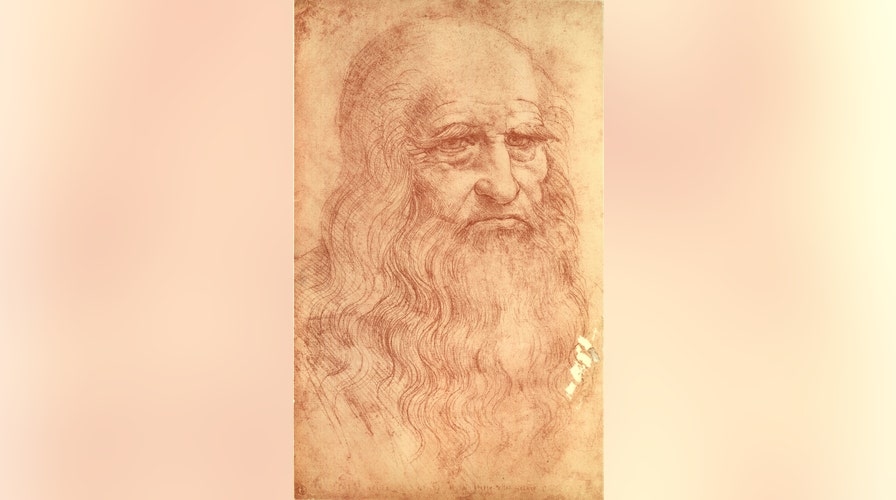Fox News Flash top headlines for May 24
Fox News Flash top headlines for May 24 are here. Check out what's clicking on Foxnews.com
Perhaps the most famous painter, inventor and sculptor ever, Leonardo da Vinci's name resonates in the annals of history.
But a new study suggests that the quintessential Renaissance Man may have had trouble finishing some of his projects more than 500 years ago because of a disability that has become quite common today – ADHD.
Published in the scientific journal BRAIN, Professor Marco Catani of King's College London writes that the Italian polymath, who had considered himself a failure later in life, had a very real reason for his inability to finish some of his works.
DA VINCI WAS AMBIDEXTROUS, NEW HANDWRITING ANALYSIS SHOWS
"While impossible to make a post-mortem diagnosis for someone who lived 500 years ago, I am confident that ADHD is the most convincing and scientifically plausible hypothesis to explain Leonardo's difficulty in finishing his works," Catani said in a statement. "Historical records show Leonardo spent excessive time planning projects but lacked perseverance. ADHD could explain aspects of Leonardo's temperament and his strange mercurial genius."

Sketch of Italian polymath Leonardo da Vinci (1452 - 1519). (Photo by Mansell/The LIFE Picture Collection)
Attention deficit/hyperactivity disorder, or ADHD, is very common today, with more than 3 million cases being diagnosed annually. Beginning in childhood and lasting a lifetime, the disorder can be treated with medication, but the patient is never fully cured.
According to the National Institute of Mental Health (NIMH), it's believed that ADHD is caused by "interactions between genes and environmental or non-genetic factors." Some factors include:
- Genes
- Cigarette smoking, alcohol use, or drug use during pregnancy
- Exposure to environmental toxins, such as high levels of lead, at a young age
- Low birth weight
- Brain injuries
Symptoms commonly associated with ADHD include procrastination, an inability to finish tasks and restlessness in both body and mind.
Da Vinci, who died May 2, 1519, at the age of 67, was considered to have many of these issues, according to several of his biographers and contemporaries. He was "constantly on the go, often jumping from task to task" and like many with the affliction, he slept little and worked tirelessly.
There is also "indirect evidence to suggest that Leonardo's brain was organized differently compared to average," the statement added.
LEONARDO DA VINCI'S THUMBPRINT DISCOVERED: DRAWING IN QUEEN ELIZABETH'S COLLECTION REVEALS SECRETS
ADHD has been associated with a negative stigma, but there are benefits to it, Catani wrote in the study, including creativity, notably exemplified by da Vinci. "Arguably, if positively channeled, some characteristics of ADHD can bear an advantage: mind wandering can fuel creativity and originality; restlessness can move to seeking novelty and action for change," the researcher wrote.
A 2017 NIMH study showed that people who are left-handed had a greater probability of suffering from ADHD than right-handed people.
It is commonly thought that da Vinci was left-handed, but a recent study completed by experts at the art conservation and research institution Opificio delle Pietre Dure, show that he was equally adept at painting and writing with his right hand. This includes one of his more famous works, "Landscape," made when he was just 21 years of age.
Catani, who specializes in neurological disorders including autism, as well as ADHD, said that he hopes that by linking da Vinci to the disorder, it will remove some of the negativity associated with it.
"There is a prevailing misconception that ADHD is typical of misbehaving children with low intelligence, destined for a troubled life," Catani said in the statement, adding that many of the adults he sees were "bright, intuitive children." Later in life, they developed issues with depression and anxiety that lead to them feeling as if they did not reach their potential.
"It is incredible that Leonardo considered himself as someone who had failed in life. I hope that the case of Leonardo shows that ADHD is not linked to low IQ or lack of creativity but rather the difficulty of capitalizing on natural talents. I hope that Leonardo's legacy can help us to change some of the stigma around ADHD."
More than 500 years after his death, da Vinci continues to be a source of bewilderment and amazement for the modern world.
In January, da Vinci’s thumbprint was discovered in a drawing by the Renaissance Master that is owned by Queen Elizabeth II. The hidden detail, revealed in a new book entitled “Leonard da Vinci: A Closer Look,” analyzes 80 of Leonardo’s drawings from the Royal Collection, shedding new light on the famous artist’s craft.
The thumbprint was found on “the cardiovascular system and principal organs of a woman,” an anatomical drawing by Leonardo that dates to around 1509 and 1510.
Last summer, experts in Italy said they had found the earliest surviving work by da Vinci. The small glazed terracotta tile, which bears the date “1471,” is described as a self-portrait of the artist as the Archangel Gabriel.





















